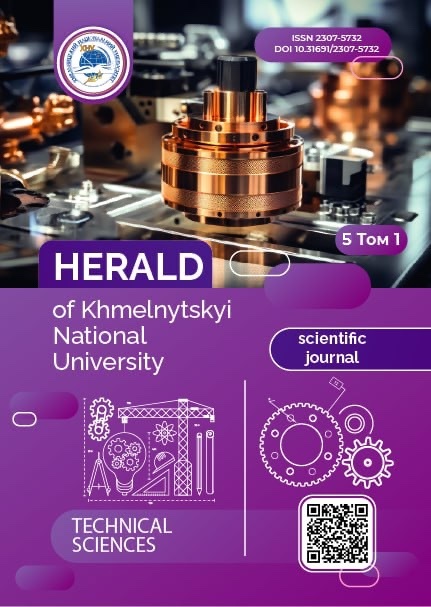ПОРІВНЯЛЬНИЙ АНАЛІЗ МЕХАНІЗМІВ ПЕРЕМІЩЕННЯ НИЖНЬОГО ТРАНСПОРТУЮЧОГО ОРГАНА ШВЕЙНОЇ МАШИНИ
DOI:
https://doi.org/10.31891/2307-5732-2025-357-31Ключові слова:
механізм транспортування швейної машини, траєкторія транспортуючого органу, кінематичний аналіз механізмів, аналоги швидкості, прискорень, ривків, критерії оцінкиАнотація
У роботі здійснено комплексний кінематичний аналіз кількох механізмів переміщення матеріалу у швейних машинах, зокрема типових важільних систем МІ, М2, М3, а також запропонованого нового механізму М4. Основною метою дослідження було оцінити ефективність зазначених механізмів у контексті реалізації інноваційного способу та пристрою, розроблених авторами для покращення процесу транспортування матеріалу в промисловому швейному обладнанні.
Кінематичні характеристики механізмів досліджувалися з використанням методів теорії механізмів і машин. Розрахунки та побудову графіків виконано в середовищі Mathcad. У процесі дослідження побудовано траєкторій руху транспортуючих органів і синхрограми їх кінематичних показників.
Критеріями оцінки прийнято значення кінематичних характеристик нижнього транспортуючого органу, які суттєво впливають на якість роботи нового пристрою для переміщення матеріалів. Зокрема, враховувалися: максимальне значення кута нахилу атах| дотичної до поверхні транспортуючого органу до напряму транспортування; величину горизонтальної складової швидкості х транспортуючих органів в момент розриву їх магнітної взаємодії; максимальне додатне значення горизонтальної складової прискорення ах верхнього транспортуючого органу при робочому ході; інтенсивність ударних навантажень на верхній транспортуючий орган, що характеризується аналогом ривків у вертикальному напрямку. Ці параметри с ключовими для забезпечення ефективної роботи пристрою, який використовує магнітну взаємодію між верхнім (неодимовий магніт) і нижнім транспортуючими органами.
Запропоновані спосіб і пристрій спрямовані на вирішення проблеми відносного зсуву шарів матеріалу (посадки), що є однією з основних проблем швейного виробництва. Аналіз показав, що механізм М4 є оптимальним для реалізації нового способу, хоча типові механізми (М!, M2, М3) також можуть бути застосовані за умови відповідного проектування. Отримані значення кінематичних критеріїв та побудовані синхрограми використовуватимуться як вихідні дані для подальших розрахунків нового пристрою, що дозволить адаптувати його до типових швейних машин.
Завантаження
Опубліковано
Номер
Розділ
Ліцензія
Авторське право (c) 2025 ЄВГЕН КОРОБЧЕНКО, ВАСИЛЬ ГОРОБЕЦЬ, ВОЛОДИМИР ДВОРЖАК (Автор)

Ця робота ліцензується відповідно до ліцензії Creative Commons Attribution 4.0 International License.

